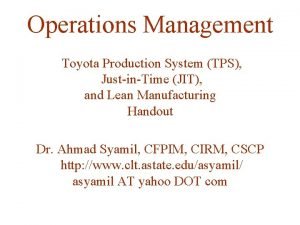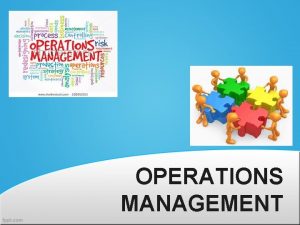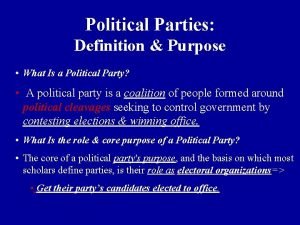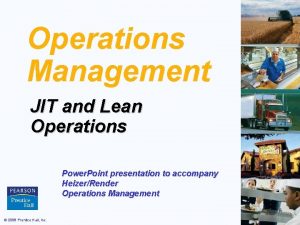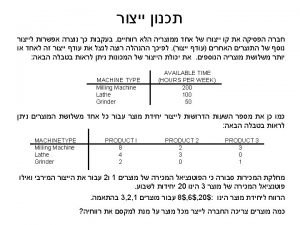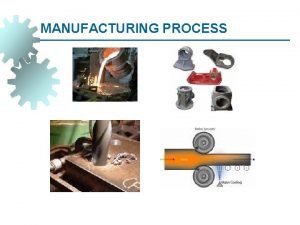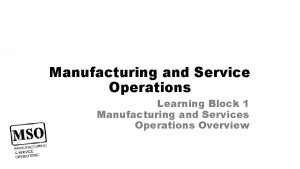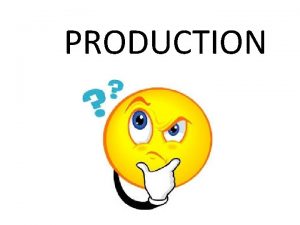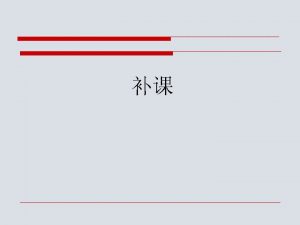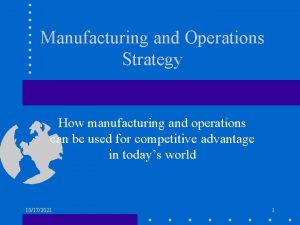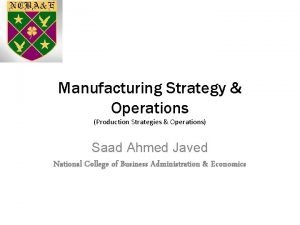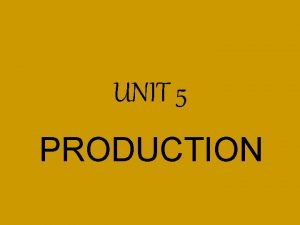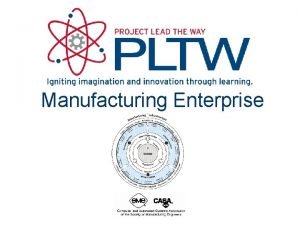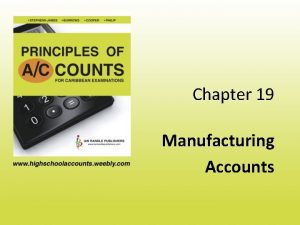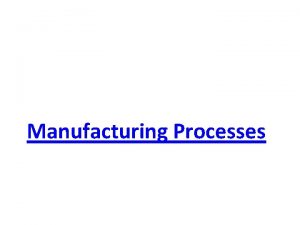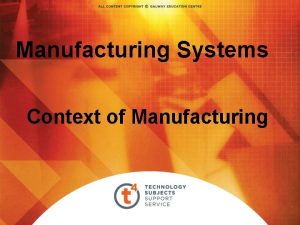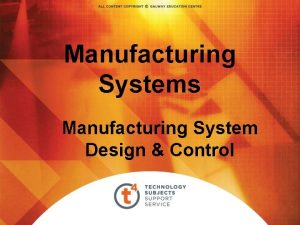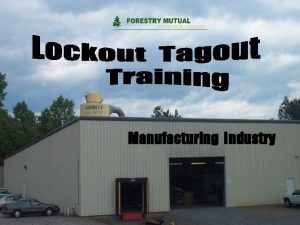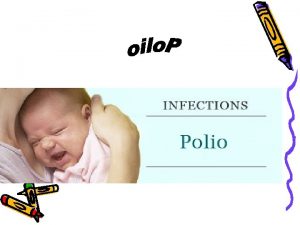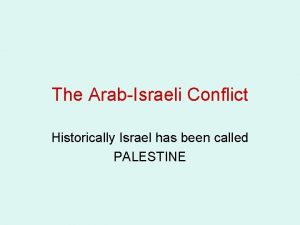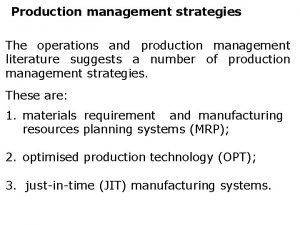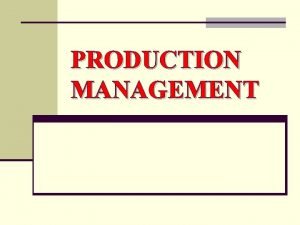Operations Management Historically called production or manufacturing where

















- Slides: 17

Operations Management • Historically called “production” or “manufacturing” where the focus was on methods to operate a factory • “Operations” view the operations functions as a whole rather than just inputs and outputs • The planning and designing of the processes that transform resources into finished products; managing the transformation process; ensuring high quality of finished goods. FHF 8 -3

Operations Management • Manufacturing – activities and processes used in making tangible products (also called production) • Production – activities and processes used in making tangible products (also called manufacturing) • Operations – the activities and processes used in making both tangible and intangible products FHF 8 -3

Transformation Processes of Operations Management …continued on next page FHF 8 -4

Services Are. . . § § Generally intangible Perishable Demand can be variable Cannot be saved, stored, resold, or packaged FHF 8 -7

Service Businesses – • Airlines • Universities • Hotels • Restaurants • Nonprofit organizations • Over 70% of all employment in developed economies; fastest growth of jobs …continued on next page FHF 8 -10

Manufacturing and Service Compared Manufacturing Service Tangible Intangible Uniform inputs Customized inputs Uniform outputs Customized outputs Less labor intensive More labor intensive Easy to measure productivity More difficult to measure productivity (due to variations in demand, service, requirements and intangibility) FHF 8 -8

Designing Operations Process What is the appropriate method of transformation? • A. Standardization – the making of identical interchangeable components or products. Faster, reduces production costs • Televisions, Ballpoint pens, Tortilla chips etc. …continued on next page FHF 8 -10

Designing Operations Process • B. Modular Design – creation of an item in self-contained units that can be combined or interchanged to create different products • Personal computers (CPU’s, motherboards, monitors), Automobiles • C. Customization – making products to meet a particular customer’s needs or wants • Repair services, photocopy services, bridges, ships …continued on next page FHF 8 -10

Planning Facilities • Once the company knows the process it will use to create its products, then they need to decide on; • Facility location • Facility Layout FHF 8 -13

Facility Location • High costs involved • Permanent § Pay attention to • Proximity to market • Availability of raw materials, transportation, power, labor § Climatic influences • Community characteristics • Taxes and inducements FHF 8 -13

Facility Layout/Physical Location • Fixed-Position Layout--Project organization – All resources needed for the product are brought to a central location. – Unique product e. g. , construction, exploration • A company using a fixed position layout is called a project organization • Process Layout-- Intermittent organization – Layout is organized into departments that group related processes – Produce products to customers’ specifications, e. g. , hospital • Product Layout--Continuous manufacturing org – Production is broken down into relatively simple tasks assigned to workers positioned along an assembly line. – E. g. , automobiles, TV FHF 8 -15

Sustainability and Manufacturing § Pressure has increased for manufacturing and production systems to reduce waste and improve sustainability § Conservation, recycling, alternative energy use, reduction of pollution (greenhouse gas) § Consumers prefer to purchase goods that were manufactured in an environmentally-friendly facility FHF 8 -17

SUPPLY CHAIN MANAGEMENT Connecting and integrating all parties or members of the distribution system in order to satisfy customers [ Also called Logistics: includes all the activities involved in obtaining and managing raw materials and component parts, managing finished products, packaging them and getting them to customers. ] FHF 8 -18

Supply Chain Management: Purchasing Buying of all materials needed by the organization § Desired quality § Correct quantities § Lowest cost Ø Otherwise known as Procurement FHF 8 -19

Supply Chain Management: Inventory All raw materials, components, completed or partially completed products, and pieces of equipment that a firm uses Inventory Control • Process of determining how many supplies and goods are needed and keeping track of quantities on hand, where each item is and who is responsible for it FHF 8 -20

Outsourcing § Increasingly a part of supply chain management in operations § Outsource aspects of operations to companies that provide products more efficiently, at lower cost, greater customer satisfaction. FHF 8 -22

Managing Quality Degree to which a good or service meets the demands and requirements of customers § A critical element of operations management § Determining quality can be difficult (services) Ø Subjective based on consumers’ expectations and perspectives FHF 8 -25
 Arti post production
Arti post production Manufacturing cost vs non manufacturing cost
Manufacturing cost vs non manufacturing cost Job costing and process costing
Job costing and process costing Uncontrollable cost example
Uncontrollable cost example Manufacturing cost vs non manufacturing cost
Manufacturing cost vs non manufacturing cost Additive manufacturing vs subtractive manufacturing
Additive manufacturing vs subtractive manufacturing Operations management toyota
Operations management toyota Operations management functions
Operations management functions Product design process in operations management
Product design process in operations management Historical context
Historical context Clearly explain what is meant by the term geometric optics
Clearly explain what is meant by the term geometric optics Primitive period of physical education
Primitive period of physical education Sign language for no talking
Sign language for no talking Historically, realignments occur
Historically, realignments occur Jit operations management
Jit operations management A firm is planning to manufacture a new product
A firm is planning to manufacture a new product In production process
In production process Difference between manufacturing and service operations
Difference between manufacturing and service operations






